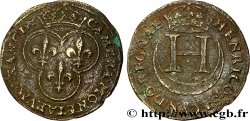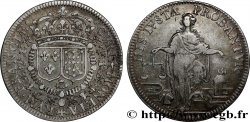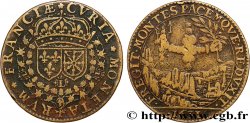E-auction 94-49301 - fjt_292378 - COUR DES MONNAIES DE PARIS Émission vers 1560 n.d.
You must signin and be an approved bidder to bid, LOGIN TO BID. Accounts are subject to approval and the approval process takes place within 48 hours. Do not wait until the day a sale closes to register. Clicking on « bid » constitutes acceptance of the terms of use of cgb.fr private e-auctions.
Bids must be placed in whole Euro amounts only. The sale will start closing at the time stated on the item description; any bids received at the site after the closing time will not be executed. Transmission times may vary and bids could be rejected if you wait until the last second. For further information ckeck the E-auctions F.A.Q.
NO BUYER'S FEE.
NO BUYER'S FEE.
| Estimate : | 45 € |
| Price : | 63 € |
| Maximum bid : | 101 € |
| End of the sale : | 02 February 2015 18:55:00 |
| bidders : | 9 bidders |
Type : Émission vers 1560
Date: n.d.
Mint name / Town : Nuremberg
Metal : brass
Diameter : 26 mm
Orientation dies : 12 h.
Edge : lisse
Rarity : R2
Coments on the condition:
Attendrissant, ce jeton est vendu avec son emballage descriptif manuscrit, probablement des années 1880
Catalogue references :
Obverse
Obverse legend : EX. SC. XV. VIR. MON. FR.
Obverse description : La Monnaie debout à gauche tenant des balances de la main droite et une corne d'abondance de la gauche.
Reverse
Reverse legend : APPOLO DIANA ; À L'EXERGUE : H.K..
Reverse description : Appolon radié, une grande lyre dans la main gauche fait face à Diane, portant le croissant de lune, un carquois et un arc, une biche à ses pieds.
Commentary
Formée dès le milieu du XIV siècle, la Cour des Monnaies fut élevée au rang de cour souveraine par un édit d'Henri II de janvier 1552. Le modèle français de ce jeton de Nuremberg est le Feuardent 2138 et nous pouvons noter que comme dans le cas d’André Hac les monnayeurs nurembergeois prennent un malin plaisir à copier des jetons de ceux qui sont chargés de poursuivre leurs productions.







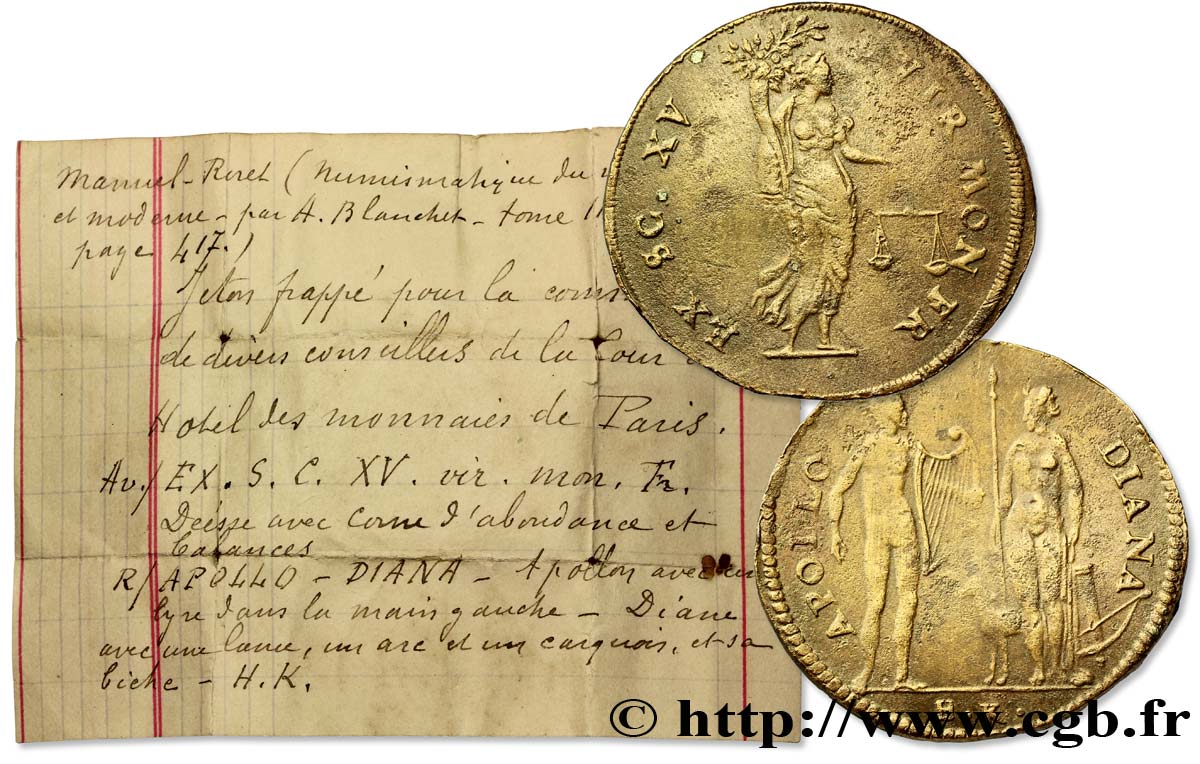
 Report a mistake
Report a mistake Print the page
Print the page Share my selection
Share my selection Ask a question
Ask a question Consign / sell
Consign / sell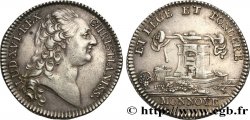
 Full data
Full data
